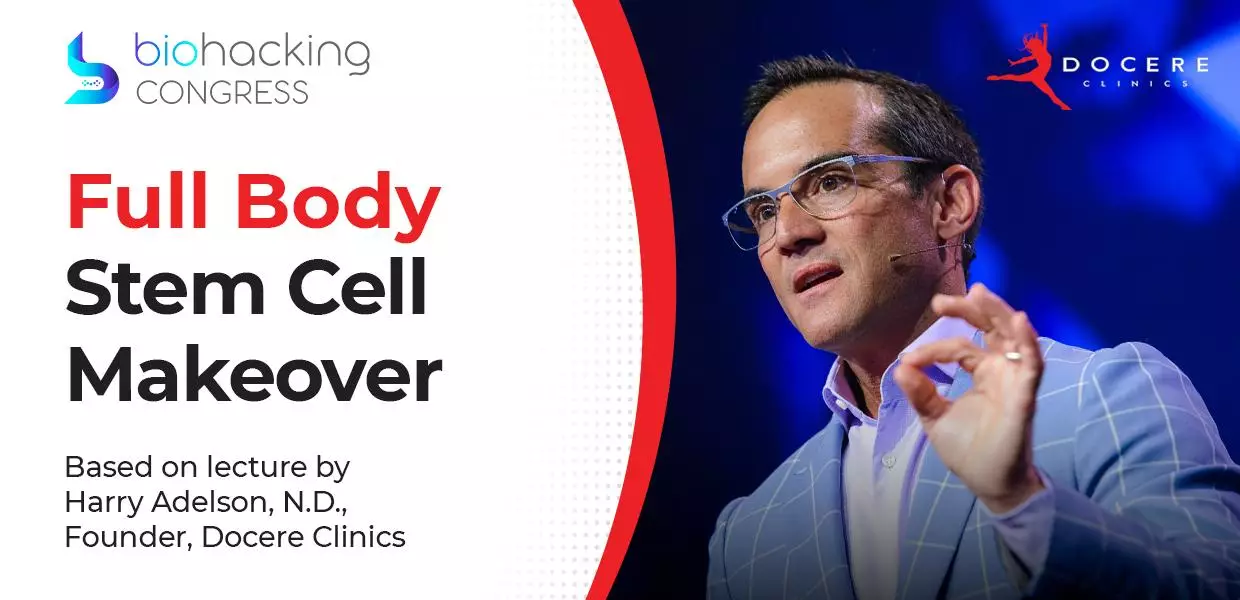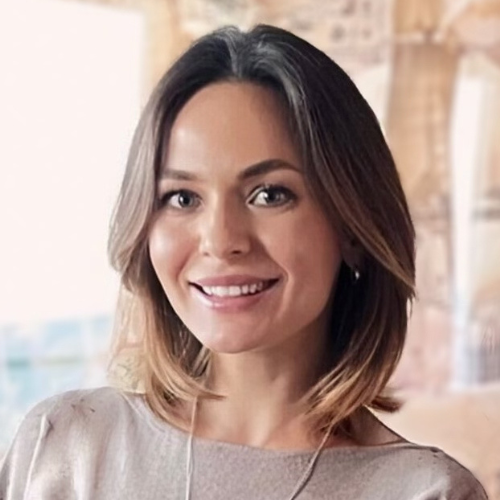Full Body Stem Cell Makeover; the Most Comprehensive Stem Cell Upgrade Ever Conceived
Chronic pain is the leading cause of disability worldwide. The actual cost of the economic impact of chronic pain is more than cancer, diabetes, and heart disease combined. It's staggering, but because pain doesn't kill you, it doesn't get nearly the research dollars that those other three areas get.
“One of the predictors of longevity is purpose in life. If your goal in any way includes the use of your body, then becoming disabled from pain runs the genuine risk of robbing you of your purpose in life,” Harry Adelson, N.D. Founder of Docere Clinics says.

Harry Adelson, N.D. has performed over 7,000 bone marrow and adipose-derived adult stem cell procedures and has injected stem cells into over 2,000 intervertebral discs, placing him solidly among those most experienced in the world with the use of autologous stem cells for the treatment of musculoskeletal pain conditions. His clinic Docere Clinics specializes in using autologous stem cells for the treatment of pain. Located in Park City, UT.
Why has conventional medicine fallen down on the job? Primarily it's because we're so enamored with Magnetic resonance imaging (MRI). MRI is a medical technique that uses strong magnetic fields and radio waves to generate images of organs and structures inside your body.
MRI is a fantastic tool. We can see every tiny detail of the human body. The problem occurs when you look at the research. If you take, for instance, a hundred asymptomatic people who've never had low back pain and you do MRI on them, 60% of them are going to have abnormalities, and somewhere around 15% are going to have abnormalities. The significance is that if they had related symptoms, they would be candidates for immediate emergency surgery.
These are people with no pain at all. The American College of Surgeons issued a position paperback, 2011, discouraging doctors from ordering MRI for recurring low back pain. If somebody has a neurologic deficit like fecal incontinence or if a doctor suspects cancer, that's when you order an MRI. Still, just for low back pain, all you're doing by ordering MRI is making the treatment more expensive. Doctors are sending the patient down some expensive and potentially dangerous rabbit holes.

What is the pain generator? If it's not what you see on the MRI, then what's causing the pain? “That's where we shift our focus from macroscopic pain to microscopic pain,” Dr. Adelson describes. “If you look at connective tissue, it's a miracle fabric. It stretches just the right amount in all directions, and the nerve fibers pass freely through it without firing pain signals.”
“Similarly, there's just enough blood flow to bring metabolic waste away and nutrients towards the area. When you have sub-optimal healing, you lose both of those sorts of superhuman powers - the miracle fabric loses its miracle properties. It stretches too much in some directions and not enough in others. Those tiny nerve fibers that pass through there constantly fire pain signals. You also get something called neovascularization which is when you grow new irregularly formed blood vessels,” Dr . Harry Adelson explained.
Every time you grow a new blood vessel you grow a sensory nerve right next to it but these are irregularly formed blood vessels so instead of improving your ability to bring metabolic waste to the air, to bring nutrients to the area, and metabolic waste away you actually lose that ability. That’s neovascularization.
“We've known about tendonitis for a long time. However, we've learned that it also happens in arthritis and in the spinal canal. What we're focusing on is microscopic anatomy, the terrain essentially. We're shifting from conventional medicine which is more acting as a mechanic and trying to determine which parts of the machine need to be replaced or repaired. We're thinking more like a gardener, we're trying to improve. The health of the soil. How do you take unhealthy soil and make it healthy?
Let's look at the normal healing pathway. How do we heal after injury ourselves? The blood vessels are ubiquitous with a couple of rare exceptions. We have blood vessels everywhere in our bodies and whenever you have an injury then blood vessels are involved. There are four main components of blood - (1) the serum, (2) the red blood cells, (3) the white blood cells, and (4) the platelets.
When platelets find themselves outside of a blood vessel it releases signaling proteins. The most important of which is when platelet-derived growth factor comes in contact with cells outside of their blood vessels, they're called pericytes. Pericytes are responsible for vasoconstriction and vasodilation. The parasite detaches off the blood vessel and morphs into a mesenchymal stem cell.
Mesenchymal stem cells are the body's natural healing. It's like our own drug store in our own body. What makes a stem cell? The stem cells can divide; they have the ability to either turn into a new version of themselves, self-replicate or differentiate into a target tissue cell.
When we're using stem cells therapeutically it's less this superhuman power and more paracrine effect. The paracrine effect is the mechanism whereby stem cells' ability to recognize the presence of damaged tissue and thereby release these signaling proteins to kill invaders, kill microbes, control inflammation, and trigger the growth of new healthy connective tissue.
We have stem cells in all the tissues in our body, the fat pads, the synovium, the bone, the ligament, and the tendon. Their job is to maintain the health of their microenvironment. Whenever you have healed after injury, it's a stem cell-mediated event.
The scientific studies on stem cells concluded stem cell therapy reduces pain, improves the health of the cartilage. The stem cells treat people and make them feel better.
BiohackingCongress's Team is very grateful to Harry Adelson, ND for joining the congress and giving an incredible lecture.
Watch full Dr. Adelson's 40-minute lecture on Full Body Stem Cell Makeover as well as 50+ lectures, panel discussions, and performances from renowned biohackers with a BiohackingCongress year-long subscription. Get your access to a healthy future now! Follow this link.
Based on the lecture by Harry Adelson, ND.
Special Access to
Exclusive TopBiohacks
and more


